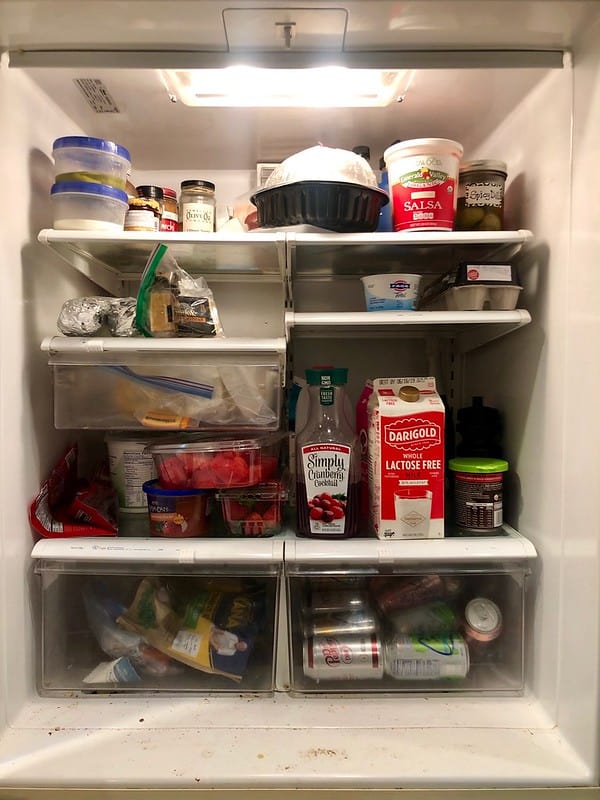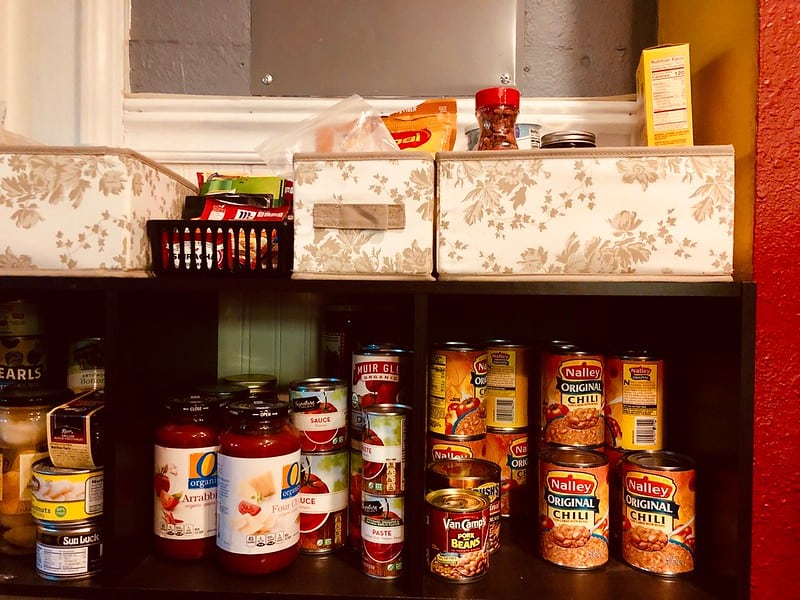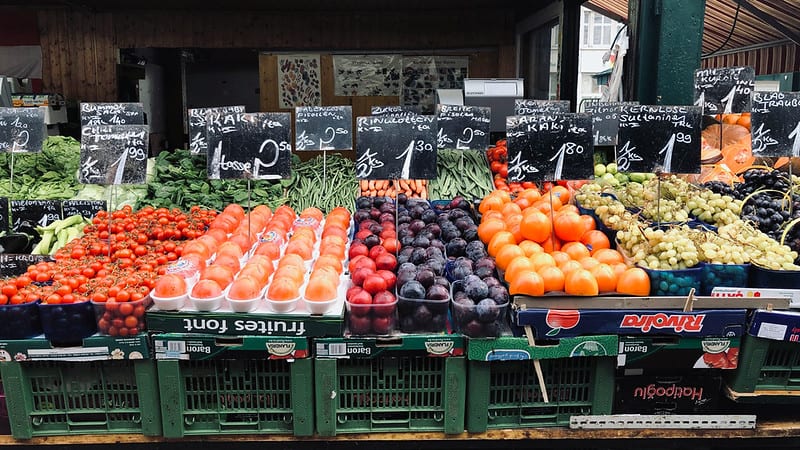Food waste and food consumption in the United States
I’ve been thinking a lot lately about how much food I consume (and waste). I’m not happy with how I shop and eat, and it’s not just because I’m fat right now. I don’t like what I’m eating and I don’t like how much food I’m throwing out.
Food waste is a huge problem in the United States. Most studies find that Americans waste about one-third of all food that enters the supply chain. This is insane. And when you consider that food spending is the third-largest component of the average American budget, this is a great place for most folks to boost their budget.
According to the 2017 Consumer Expenditure Report, the average household spends $7,729 per year ($644.08 per month) on food. If, as the USDA reports, 31% of the average family’s food goes to waste, that’s the equivalent of burning $2395.99 per year ($199.67 per month).
For most families, $200 per month is a big deal. That can be the difference between deficit spending and earning a “profit”. That $200 per month could be enough to purchase a new car or to afford better health insurance.
Today, I want to think out loud about food consumption and food waste in my own life.

This article is unusual in that I’m not going to try to offer any solutions. Instead, I’m simply going to share some observations, and I’m going to divide these observations into bite-sized chunks.
If you have solutions to food waste, however, I’d love to hear them.
Fun with Friends
Kim and I spent this past weekend in central Oregon with some of my best friends from high school. Every year, this group of twelve rents a big house for three or four nights so that we can sit around, reminisce, and enjoy a few days without kids.
As is typical with gatherings like this, each couple is in charge of one meal. For instance, Kim and I were responsible for Saturday morning’s breakfast.
As is also typical for gatherings like this, there’s always a ton of food left over. It’s tough to estimate how much a group is going to eat. So, even though we did our best to not have leftovers, there were plenty of eggs and ham and biscuits remaining after Kim and I cooked our meal. Every other couple struggled with the same thing. We always do.
Yesterday as we were packing to come home, our group marveled at how much food was still in the fridge. Honestly, we could have hosted another long weekend for twelve without having to buy groceries. (Okay, we needed more coffee. We ran out of coffee yesterday morning. Mennonites drink a lot of coffee.)
I was pleased to see that our group made a deliberate effort to not waste any of our leftovers. Kristin sent Kim home with the leftover rhubarb sauce. (Kim loves rhubarb!) We sent Kristin home with the leftover ham and the hambone. Kara grabbed the unopened beer. And so on. I’ve spent time with some groups that would have simply thrown this food out. We didn’t do that.
Food Storage in the Motorhome
During our fifteen months exploring the U.S. by RV, Kim and I had limited space for food storage. We had one (very) small refrigerator and one (very) small set of cabinets for dry goods. We learned quickly that we had to be intentional about the food we bought to keep on hand.
The fridge always contained milk and beer, plus whatever meat and salad fixings we needed for the next few days. The cupboard contained rice, pasta, and a few pre-packaged meals.
We learned to keep a mental (and written) inventory of what “stock” items were depleted. If I ate a can of bean with bacon soup, I knew I had to replace it. When we got down to two days worth of rice, we made a point to buy more.
At first, this limited storage space was frustrating. It didn’t take long, however, to learn that rather than being a problem, this limited storage was freeing. We had less food to worry about. We had fewer choices to make. We always knew what food we had on hand and when we intended to use it.
When we returned home to Portland, the fridge in the condo seemed ginormous. Who needed that much cold storage? Not us!
For a few weeks, we did a terrific job of maintaining the habits we’d learned on the road. Each afternoon, I’d walk to the store to buy whatever we needed for that evening’s meal. We didn’t stock up on staples. We simply bought what we needed for the immediate future.
Slowly, though, we reverted to our old habits. The fridge became filled with meat and greens and leftovers. After our first trip to Costco — no need to ever go to Costco when you’re on the road in an RV — our cupboards were stocked with beans and rice and cereal and coffee and pre-packaged meals.
Two years ago, we moved from that condo (a place with ample storage space) to this much-smaller country cottage. Here, our kitchen storage is limited. In fact, it’s so limited that we couldn’t store all of the food we had at the condo. We had to give some away — and put the rest in the trash.
Now, we walk a fine line. We try not to have a lot of “staples” on hand, but at the same time we like to save money by buying our favorite items in bulk. Most days, I eat a can of Nalley’s chili for lunch, for instance. At Safeway, this typically goes for $2.39 per can. If I buy a case of twelve at Costco, I can get it for less than $1.00 per can. (Don’t quote me on that price. My memory may be off. It’s low, though.)

All the same, we waste too much food. Every week, we find something that’s gone bad. Maybe it’s a package of salami that got buried under something else. Maybe it’s some vegetables that never got used for their intended recipe. Maybe it’s a jar of salsa that’s managed to mold.
Kim and I hate wasting food. Yet we do it. And it’s largely because we have too much on hand at any given time. We forget what we have. Or we have so much that we can’t possibly eat it all. It’s a problem. But I know it’s not a problem that’s unique to us.
A Tiny Fridge
Twenty years ago, I knew a young couple that lived in an apartment with a small dorm-sized refrigerator. I thought it was funny at the time. “You don’t have space to store anything!” I said when I first saw it.
“We like it,” the told me. “It forces us to make decisions about what we’re going to buy. We can’t just stock up on everything. We have to be deliberate.”
I didn’t get it.
Similarly, my friend Sparky never kept much food on hand. I thought it was weird. When I’d visit him, his fridge would contain maybe a carton of eggs, a head of lettuce, and a carton of milk. His cupboards would be bare except for a loaf of bread and a box of cereal.
“Where’s your food?” I asked him once. Sparky shrugged.
“I only buy what I need,” he said. “I hate that I have to buy a dozen eggs. I’d rather buy only two. I wish I could buy just two slices of bread at a time. I don’t want a fully-stocked pantry. For one, it feels oppressive. It’s too much Stuff. Plus, I think it leads to food waste.”
A Colossal Waste
Eight years ago, my mother’s mental health problems reached a crisis point. She was in a state of constant disorientation and confusion. (Actually, she’s still in this state.) After she drove her car through the back of her garage, my brothers and I moved her into an assisted-living facility.
As we cleaned her house during the next few weeks, we were shocked by how much food she had. This single 63-year-old woman had enough on hand to feed a family of five for weeks. Or months. But the sad part was that so much of the food was expired or spoiled. The biggest surprise was a collection of spices from the 1970s.
She had eight-year-old mayonnaise in the fridge. She had multiple opened jars of salsa. The pantry — which my grandfather had built to store my grandmother’s copious canning — was stocked with cans and cans of Costco tuna fish.
We salvaged as much of the food as we could, taking it home for ourselves. Most of it had to be thrown out.
Eating Like Europeans
This Saturday, I’m flying to Europe to travel again with my cousin Duane. Thankfully, he’s still with us — and he’s feeling healthy enough to explore France for a couple of weeks.
Duane and I both love how Europeans buy food. (Or, how we believe they buy food. Our perception may not match reality, and we know that.)
There are supermarkets in Europe, but they’re not the megastores we see here in the U.S. And when people shop, they don’t buy for weeks at a time. They buy for days at a time. Or one day. They buy what they need for the immediate future. Here in the U.S., we tend to have personal larders designed to satisfy any possible want at any possible moment.
Plus, Europe has many more small, single-purpose shops. Duane and I had a ton of fun in December talking with this gal in Strasbourg who ran a cheese shop. She loved cheese, and she loved sharing it with us:

Want some meat? Stop by the butcher to pick some up. Want a few tomatoes? Stop by the produce stand. Need bread? Head across the street to the bakery. And so on. Stores like this do exist in many parts of the U.S., but they’re almost always gourmet specialty shops targeting a high-end clientele. Plus, they’re few and far between. You have to drive from the butcher to the bakery to the produce stand.
From what I’ve seen of Europe, you can find these shops almost anywhere — big cities and small. And they’re meant for everyone, not just the wealthy.
Again, my perception might be tainted. I might be viewing things through rose-tinted tourist glasses. But I’m willing to wager that European food waste is much less than that of the United States.
Too Much Dessert
“Crap,” Kim said as she rushed out the door this morning. It’s her first day back to work after five weeks off for knee surgery. “We still have those beignets. They’re going to go to waste.”
Last Saturday night, our group of friends went out to eat at a fancy restaurant. Kim and I ordered beignets for dessert. We thought that for $8, we’d get a modest-sized portion that she and I could split. Instead, we got five large pastries. We couldn’t finish them. We took them back to the rental house with the intention of eating them later. But we haven’t eaten them. And now, as Kim said, they’re probably going to end up in the trash.
Looking Forward
What does all of this mean for me? If I think I buy and waste too much food, how can I change? Is there a way I can change my food consumption to improve both my waistline and my wallet?
Relating these anecdotes has helped me to understand that yes, I can (and should) change how I’m buying and storing food. Doing so would help me eat better. Plus, it’d help us feel less cramped in our kitchen.
Last autumn, I wrote about re-writing my financial blueprint so that I’m buying things based on actual needs rather than potential wants. At the time, I was thinking about books and garden tools. But the same principle applies to food.
The fundamental problem in our lives is that we buy food based on potential wants. not immediate needs. We might want to have pasta next week, so we buy noodles and tomato sauce and meat. We might want to have a big salad this weekend, so we stock up on vegetables and greens. We often prep a charcuterie board for dinner — we did so last night! — so we try to keep a variety of cheese and salami on hand. But what happens when we go weeks without doing this? Well, the meat and cheese goes to waste.
Lack of waste was one of the huge advantages to my recent HelloFresh experiment. When you open a recipe bag, you know you’re going to get only what you need to make this meal — and no more. You won’t end up with a bag of carrots that turns rubbery because they got buried in the produce crisper. They give you the one carrot you need to make your salad.

I’m not ready to go back to HelloFresh, but I think there are other changes I can make to improve my consumption and waste habits.
I’d be well-served by returning to how I was prepping meals after we returned from our RV trip. Instead of keeping a ton of stuff on hand, I ought to be making daily decisions about what to eat. Except for my canned chili — which I probably eat three to five times per week — I shouldn’t be stocking up on anything at Costco.
This change won’t be as easy here in the Stafford hills as it would be in urban Portland. At the condo, I could walk to buy groceries. It was quick. It was simple. Here, the nearest stores is more than a mile away. And we live in a very hilly area. It takes 20+ miles to walk there.
Still, even this is an opportunity.
I’m fat right now. If I were to walk to Safeway at three every afternoon, I could be home by four with whatever groceries I needed for dinner. I’d burn about 250 calories in the process and I’d get time to decompress. Now that the sunny weather is here (and will remain until October), I don’t really have any excuse.
Maybe I can’t live in my idealized European fashion, but I could certainly try to integrate some aspects of that lifestyle into my own. All it’d take is a little bit of willpower.
Become A Money Boss And Join 15,000 Others
Subscribe to the GRS Insider (FREE) and we’ll give you a copy of the Money Boss Manifesto (also FREE)
